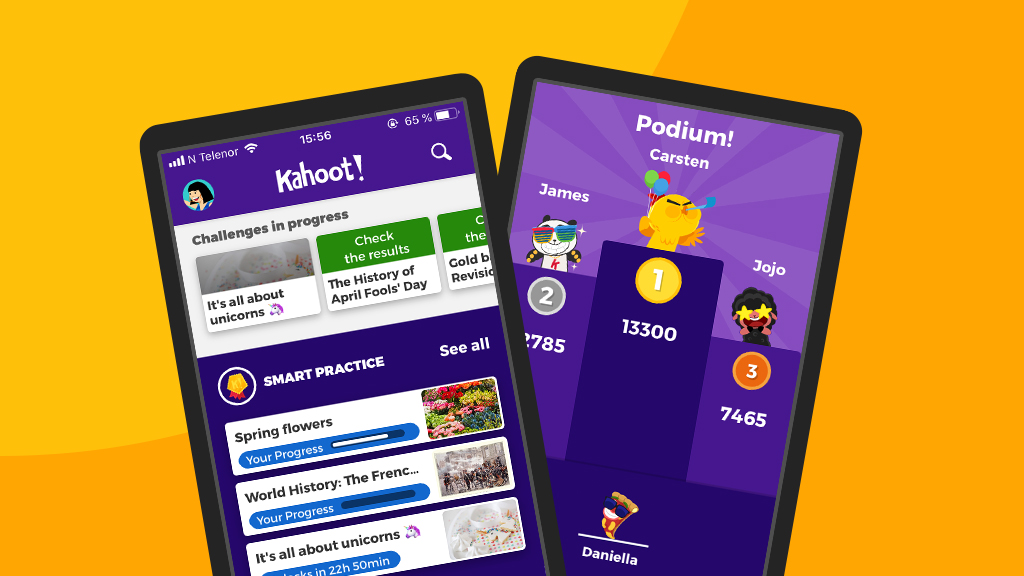Our mobile app extends fun, game-based learning beyond the classroom and a live Kahoot! experience. With our challenge feature, you can assign kahoots as homework and track learners’ progress in real time. Using the app, students can easily make their own quizzes, taking the lead on learning content and developing their creative and research skills.
Now, we’ve added a new feature to help students better retain knowledge they obtained in class, restudy difficult questions, and be able to retrieve those learnings many weeks after content was taught. Smart practice, as we named this feature, will be especially handy during review and test prep season. Find out how it works and what learning methods smart practice is powered with.
How smart practice works
Learners can access smart practice after playing a live kahoot or a challenge where they answered some questions incorrectly. They will be prompted to start it when a game is completed.
Completing smart practice step by step, they’ll eventually ace the kahoot by remembering all correct answers. Step 1 can be played any time after the initial game. The learner will be taken through questions answered incorrectly until they score 100%. Step 2 will unlock 24 hours later, and step 3 – another 48 hours after that. The app will remind learners once the next step is ready to play.
On both these steps, a learner replays the original kahoot with order of answers randomized until they ace all questions.





